Central to the settings that harbor them, billowing window treatments screen unappealing views, guard privacy, filter direct sunlight, and, not least, solicit admiring glances. With or without dangling passementerie cascading down leading edges, the most enviable ones hang glamorously streamlined for a new era.
Until not so long ago, most every Parisian apartment with parquet de Versailles floors and portes fenêtres (floor-to-ceiling windows) that resemble doors resounded with grandiose curtains that not only were a definitive mark of status but did more for the fabled textile mills hidden outside Lyon than imaged. No more.
Better suiting the times, settings appear less opulent lately, certainly not as fussy. Conspicuously missing are elaborate over-the-top cornices hovering above windows, swags (yards of fabric spilling in front of the glass), and jabots (side pieces framing the pane), which many people nowadays consider a bit much if not the height of pretension. Even valences—certainly a staple in English country houses—are passé. Like cornices, they have a way of visually lowering the ceiling, not to mention making windows appear shorter than they are.
Replacing exaggerated looks that were once the norm, fabrics plunge from ceiling to floor, exalting simplicity. Yes, some curtains framing towering doors and windows tumble with style from eye-catching gilded poles accompanied by carved finials worthy of the past. But still more descend from iron rods and rings. Although points of view vary on rod placement, one glance confirms that the smartest curtains fall from as close to the ceiling molding as possible, making even small rooms look somewhat grander.
Dressmaker headings run the gamut, from pencil pleats whose narrow columns generate fullness, to fancier pleats pinched at the top, to painstakingly smocked headings where stitched latticework creates a pattern. But what makes all exceptionally alluring are some essential characteristics:
F To preserve natural light, curtains extend beyond the width of the window twelve to fifteen inches on each side, unfailingly mirroring the scale of the room rather than upsetting its proportions.
F For très chic richness, workrooms ceremoniously calculate fabric at two-and-a-half—and more often than not, three—times the distance from one end of the curtain rod to the other, including the return (the space from the face of the rod to the wall). In contrast to ready-made curtains, which often lack sufficient fullness, there’s no skimping on fabric.
F Light streaming in windows silhouettes the beauty of fashion-forward lace. But when it comes to airy sheers or gauzy fabrics that the French call voilage—voile, organdy, muslin, batiste—quadrupling a window’s width ensures privacy.
F Au courant stripes—which Napoléon touted—make their own fashion statement while luring ceilings into appearing taller than reality.
F Working together, lining and hidden interlining block light, absorb sound, help prevent sun damage and turn a casual window treatment into couture. But an unexpected lining—such as an irresistible plaid taffeta peeking from behind a solid silk or wool—alone, can add surprising splendor.
F Lest one wonder, weights escaping notice stitched in deep, deep hems insure that curtains drape gracefully and then turn under in soft folds.
F Floor-sweeping curtains simply brush the floor or “break” an inch and a half and certainly no more than three inches. It seems those that “puddle” on hardwoods invariably create niches for pampered pets to sleep. Regardless, the French scoff at curtains that stop short!
F Passementerie—rooted in fashion—rouses interest. Tassels hark back to the time of the ancient Egyptians, when they spared embarrassment by snugly keeping royal robes in place. These days, elegant tiebacks and trims have nothing to do with modesty.
F Though not as showy as their fringe cousins, braids and tapes supply artful, finished borders with striking individuality.
F Pencil-thin piping running down leading edges and streaming across the floor eliminates the need to justify the cost of tempting trim. In the words of twentieth-century tastemaker Sister Parish, “Curtains must always have an edge of an ending,” trumpeting a principle of French design that American designers never tire of repeating.
F In French eyes, less-than-perfectly-straight seams, a pattern that fails to match, or fringe sewn in a questionable manner is any window treatment’s undoing. Fabrics cascade from towering windows and descend from canopied beds with a meticulousness approaching haute couture, as if precisely cut and constructed by petite mains. But, then, the French are not apt to purchase expensive textiles and then save by fabricating curtains or bed hangings themselves, anymore than they are likely to upholster walls or undertake other tasks best executed by experts.
F Handsome, hand-woven Roman shades that softly filter sunlight without obscuring views are in keeping with today’s less-is-more look or yearning for minimalism.
F Dressed up or dressed down, fabric Roman shades block the sun’s rays and soften windows where windows would simply look like black holes at night and curtains would get in the way. Those mounted with inside brackets draw attention to impressive molding, while shades mounted outside the casing—as close to the ceiling molding as possible—make any window look larger without obstructing either the light or view.
F As if to push a short window to the limit, mounting a Roman shade under the curtains gives the window presence. Once again, the guiding rule seems to be that both should be mounted as close to the ceiling as possible.
F Contrary to expectations, balloon shades have suddenly joined the ranks of over-the-top window treatments, now seldom seen anywhere.
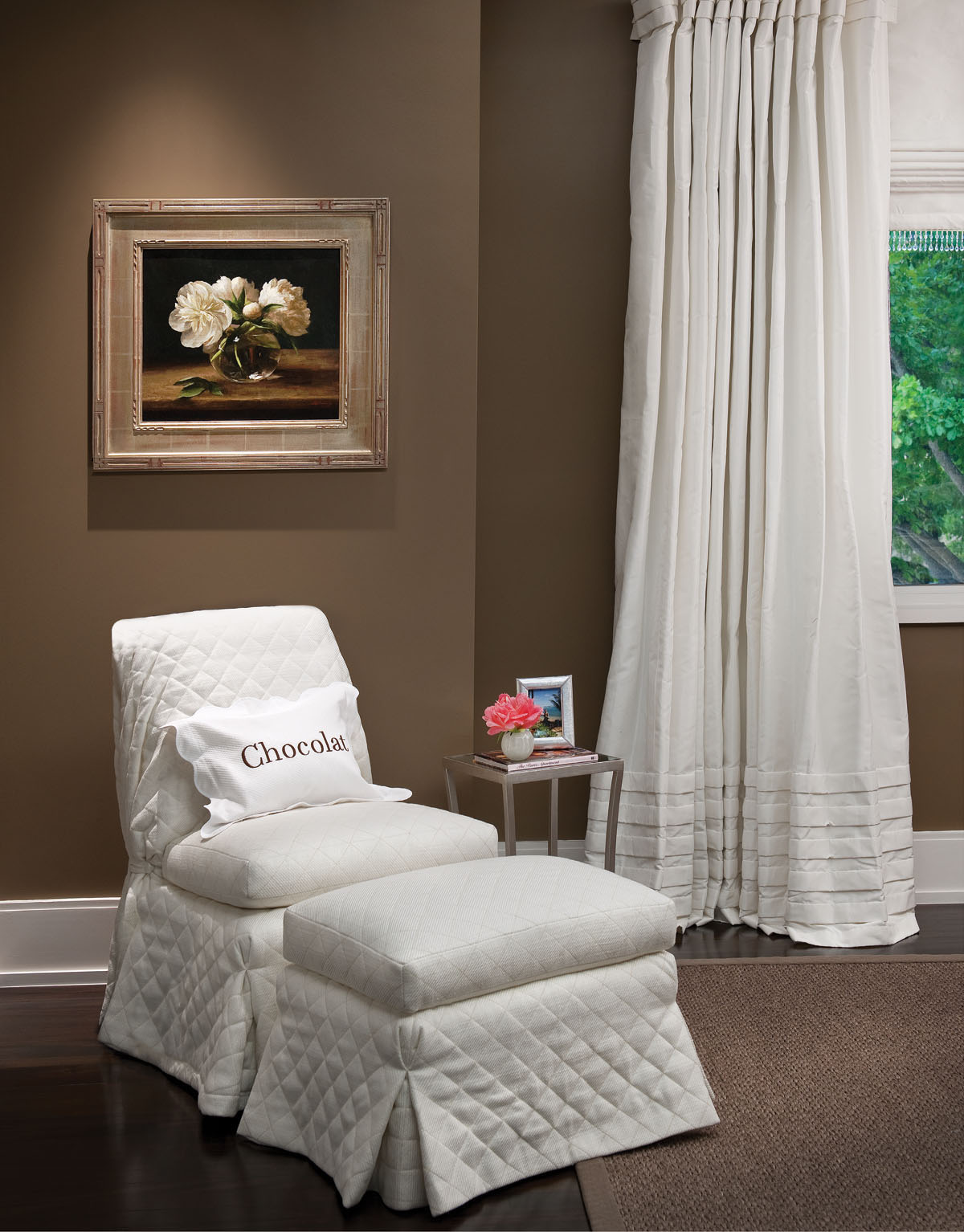
Striking, labor intensive horizontal pleats—incorporating bolts of Great Plains “Luxe Silk”—heighten the appeal of the window treatments fashioned by Straight Stitch, Dallas. In France, chocolat is the era’s forever correct, ever-meaningful hostess gift. (Flowers—demanding attention—are not.) Quilted Bergamo “Lavello” covers the Donghia low-to-the-ground slipper chair—originally intended as a place for well-to-do women to put on their stockings and slippers, unhampered by the Victorian era’s structured underpinnings. Peonies, oil on linen, is by American artist Sarah K. Lamb.
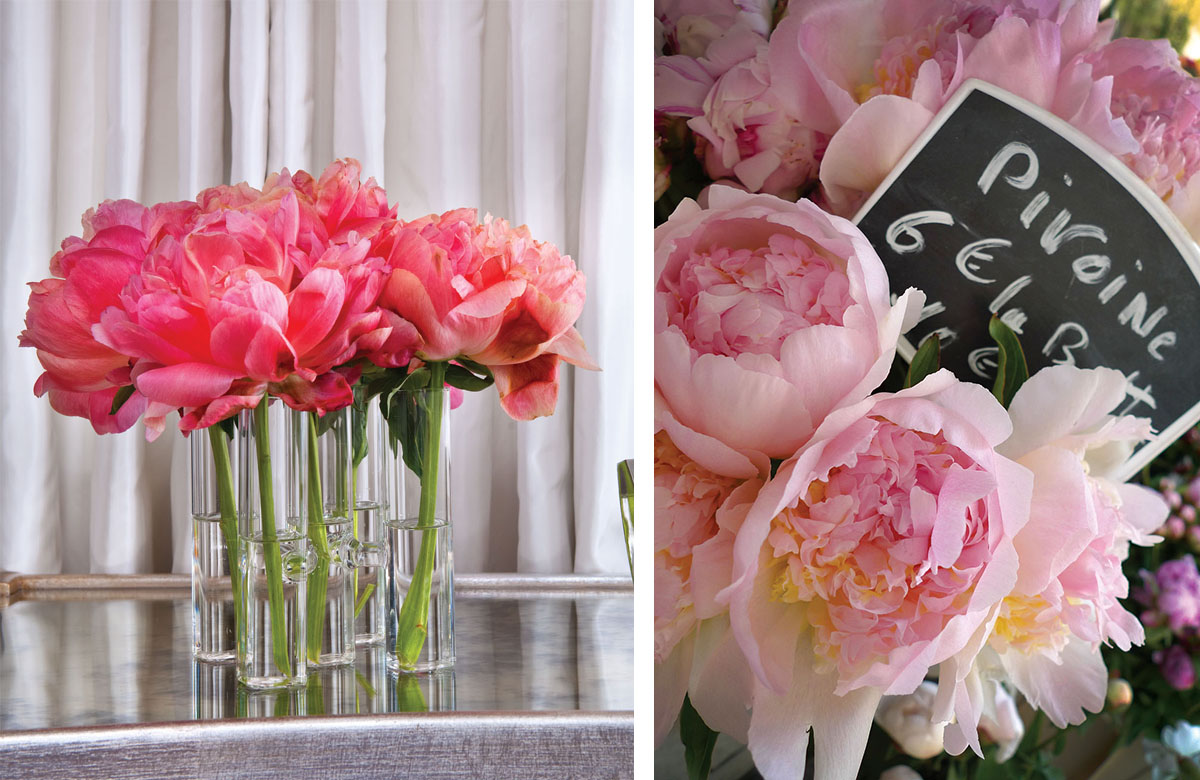
No question: peonies with ruffled frames stand out from the crowd, whether in the garden, at a flower stand, or a warming setting with a burst of color.
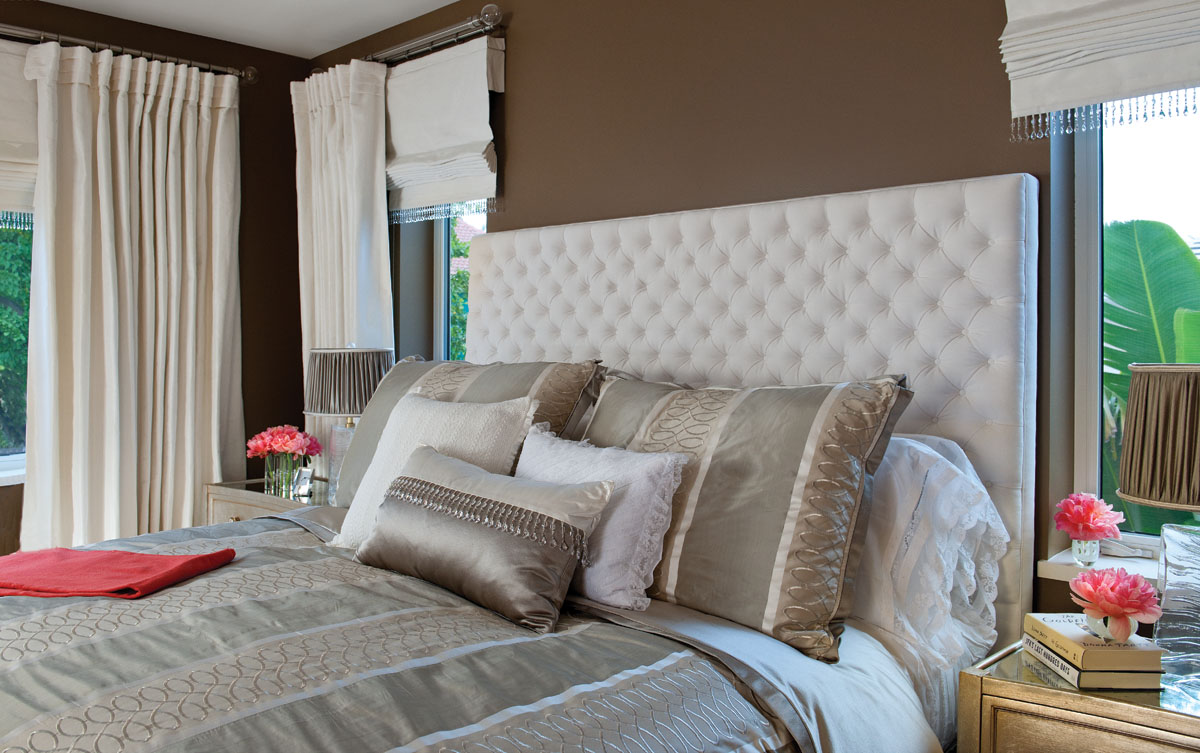
A custom headboard, impressively hand-tufted and upholstered in understated Perennials, brings uptown glamour to a master bedroom further defined by a mix of fabrics from Great Plains. (The thickness of the padding and the density of the tufting determine the lushness of an upholstered headboard.) Taking a cue from Paris, a city lauded for its dark chocolate, walls are Benjamin Moore HC 76.
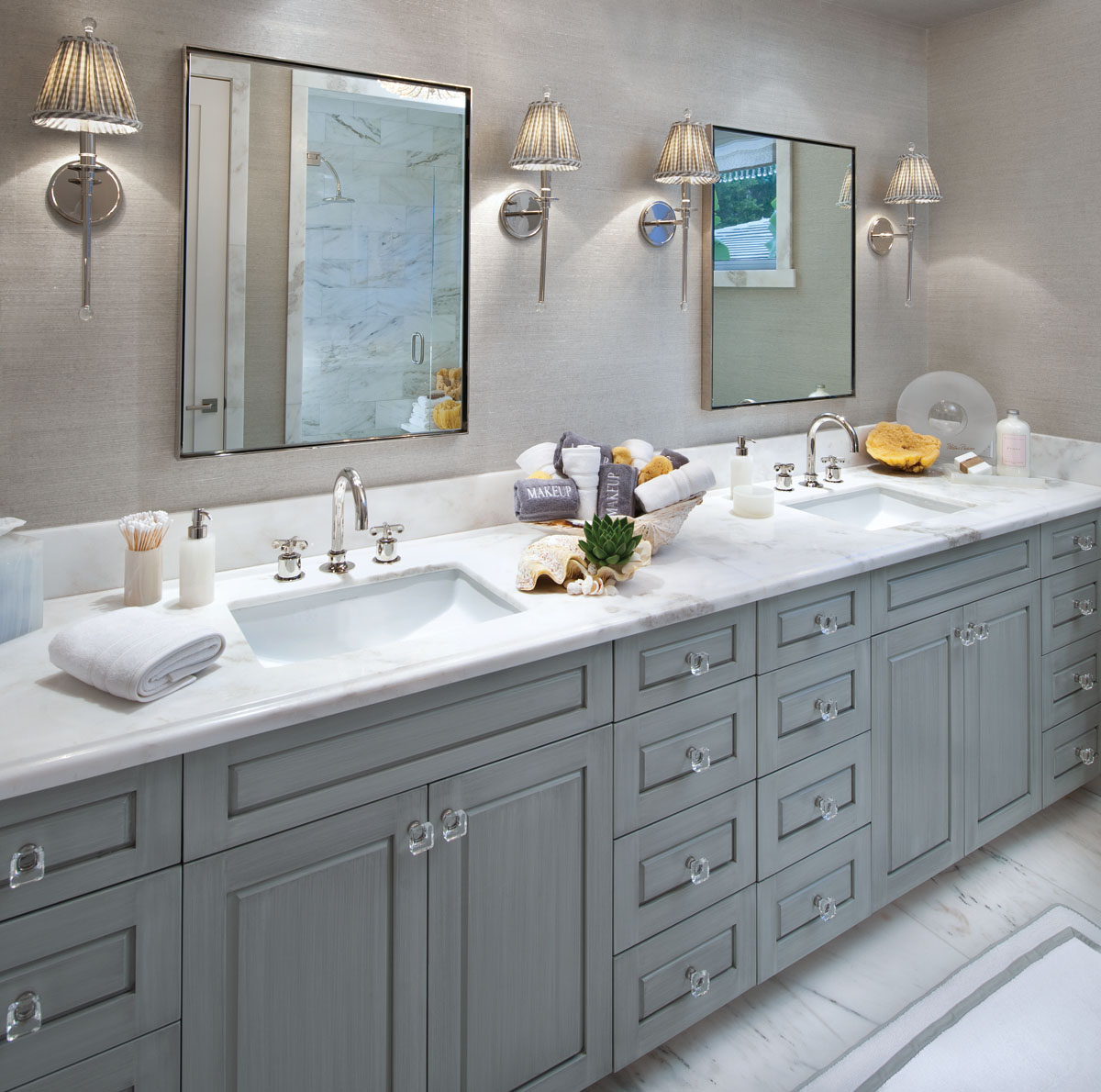
When ample drawers offer plenty of storage space—and a master bath has sought-after natural light—getting ready for the day is easy. An Osborne & Little sheer dresses the window. Sconces wear Sanderson’s gray silk check, gathered on the outside, flat inside. Pale gray wallpaper with metallic flecks is by Phillip Jeffries. Waterworks’ Imperial Danby, a marble quarried in Vermont, lines the roomy shower, floors and countertop, where sinks are under-mounted.
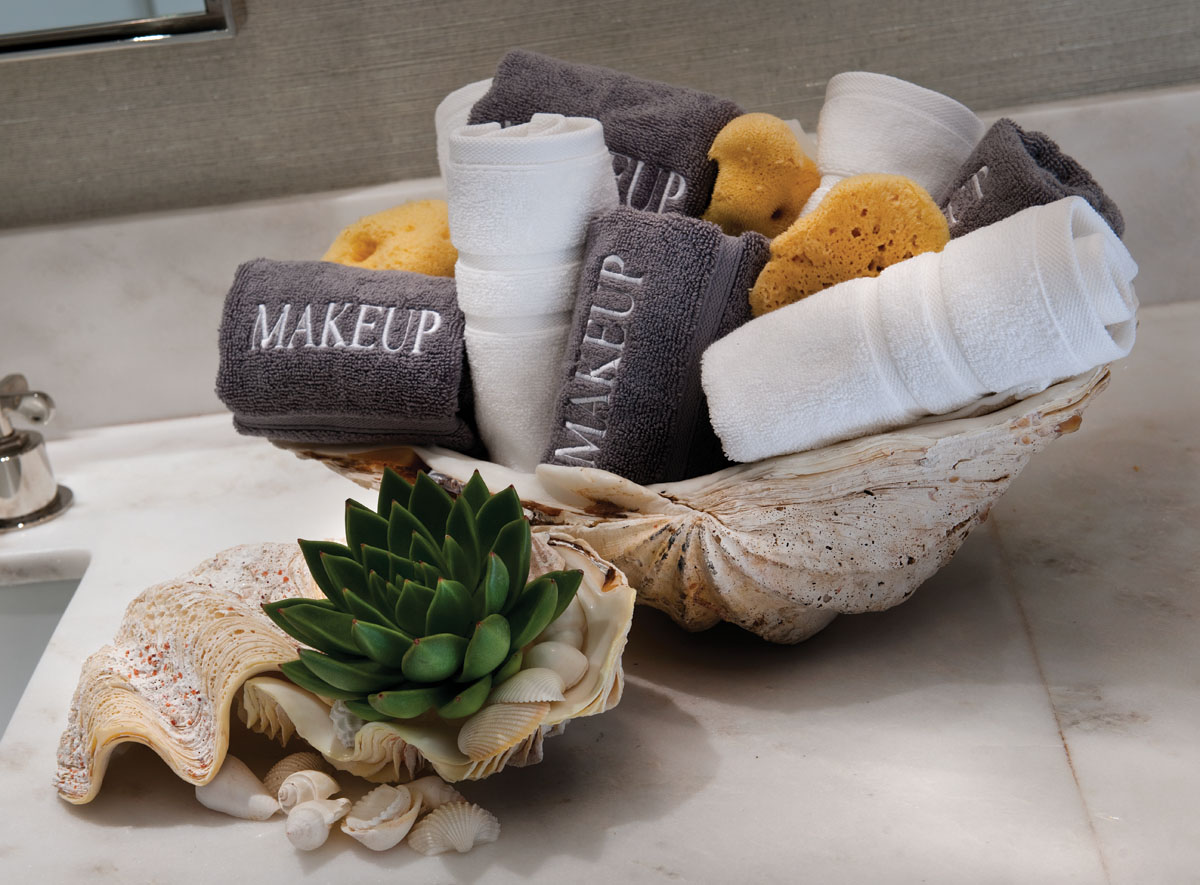
Most women would find the beauty regime of Diane de Poitiers, mistress of Henri II of France, exhausting, if not extreme. She slept sitting up to prevent wrinkles, wore a black velvet mask to thwart sunburn and bathed in asses’ milk, hoping to improve her skin tone if not help fill any creases. Since makeup has the power to stain a white face cloth but gray less so, the latter prop in an authentic clamshell from the South Pacific—transported to Jett Thompson Antiques, Naples, Florida, a second-home hot spot. A succulent adds a pop of color to the small clamshell.
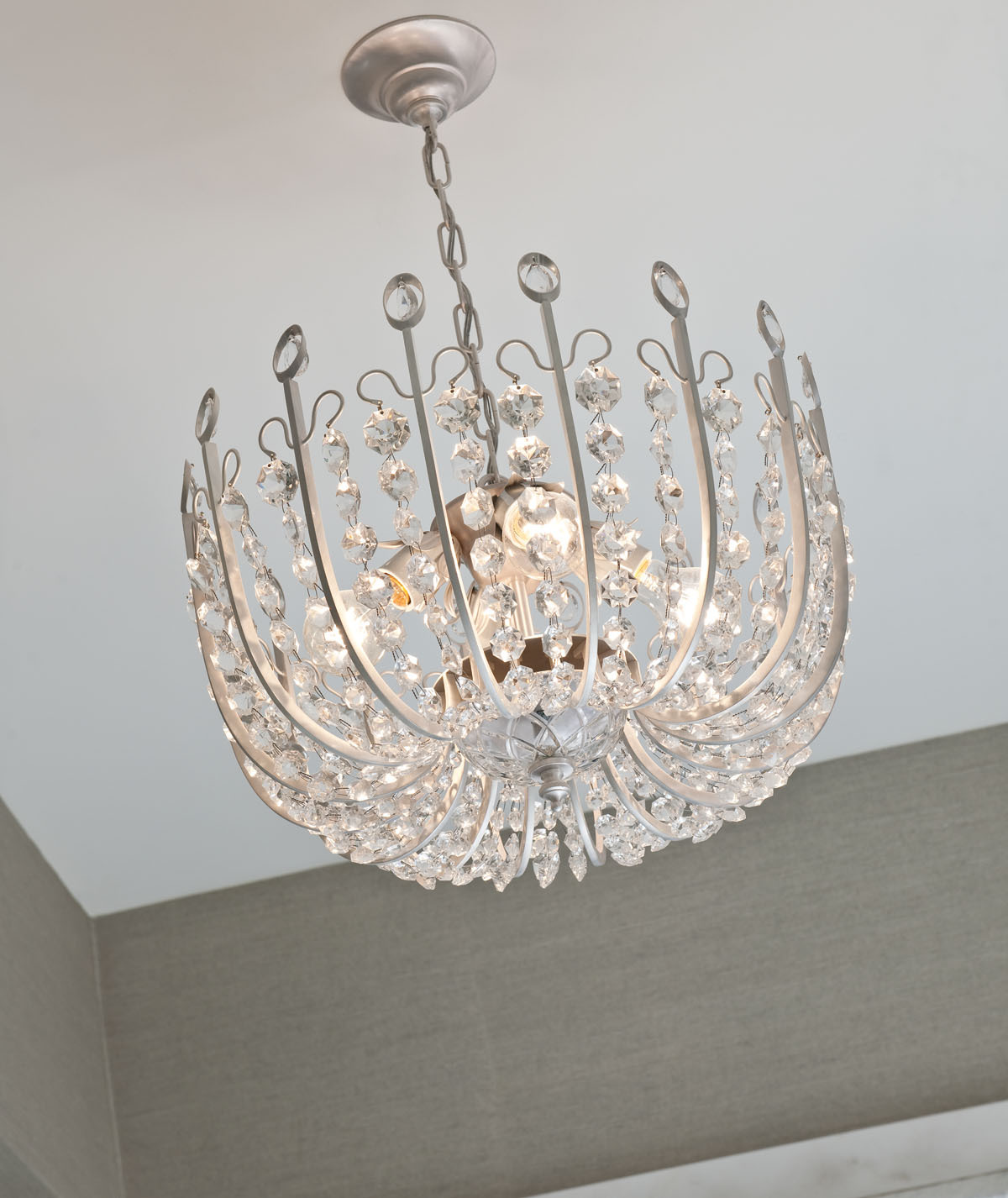
A crystal chandelier from Chameleon Lighting, London, emits warm pools of flattering light.
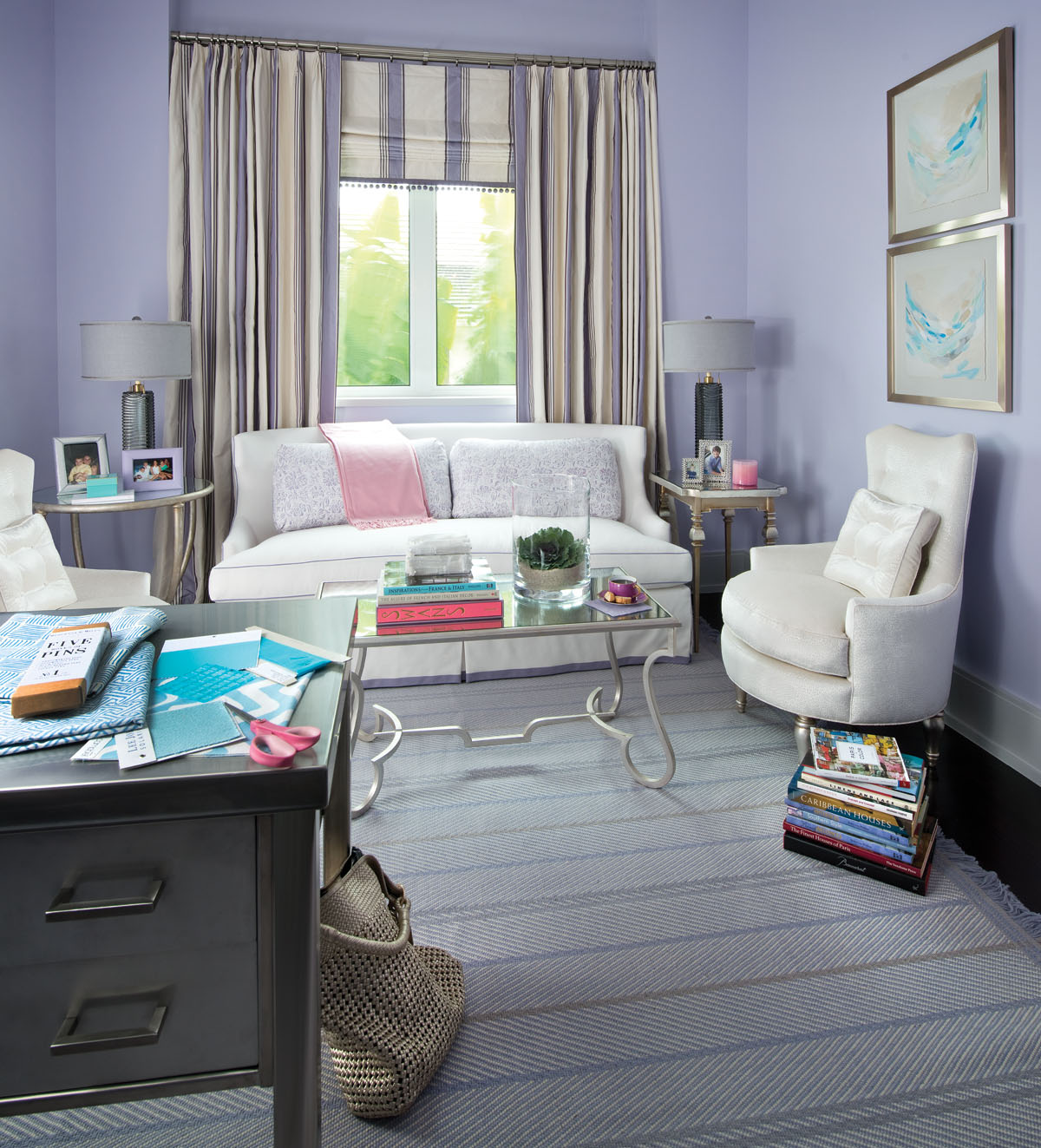
What might have become a bedroom morphed into a multipurpose room for Her, fulfilling the writer/designer’s desire for mixing business with pleasure. On the walls: sophisticated violette (lavender), so now. Sofa with clean lines and contrasting piping boasts dog-friendly Perennials and pillows in irresistible, esteemed Fortuny. Meriting more than a passing glance is the Manuel Canovas window treatment flowing from Bradley Collection double hung steel rods. Metallic silver finishes and reflective surfaces—on shapely tables with antique mirrored tops and JAB’s fashion-forward chair fabric—add pizzazz. Acrylic abstracts are by Atlanta artist Brittany Bass. Gray-lavender-and-white-striped carpet is custom, from Stark.
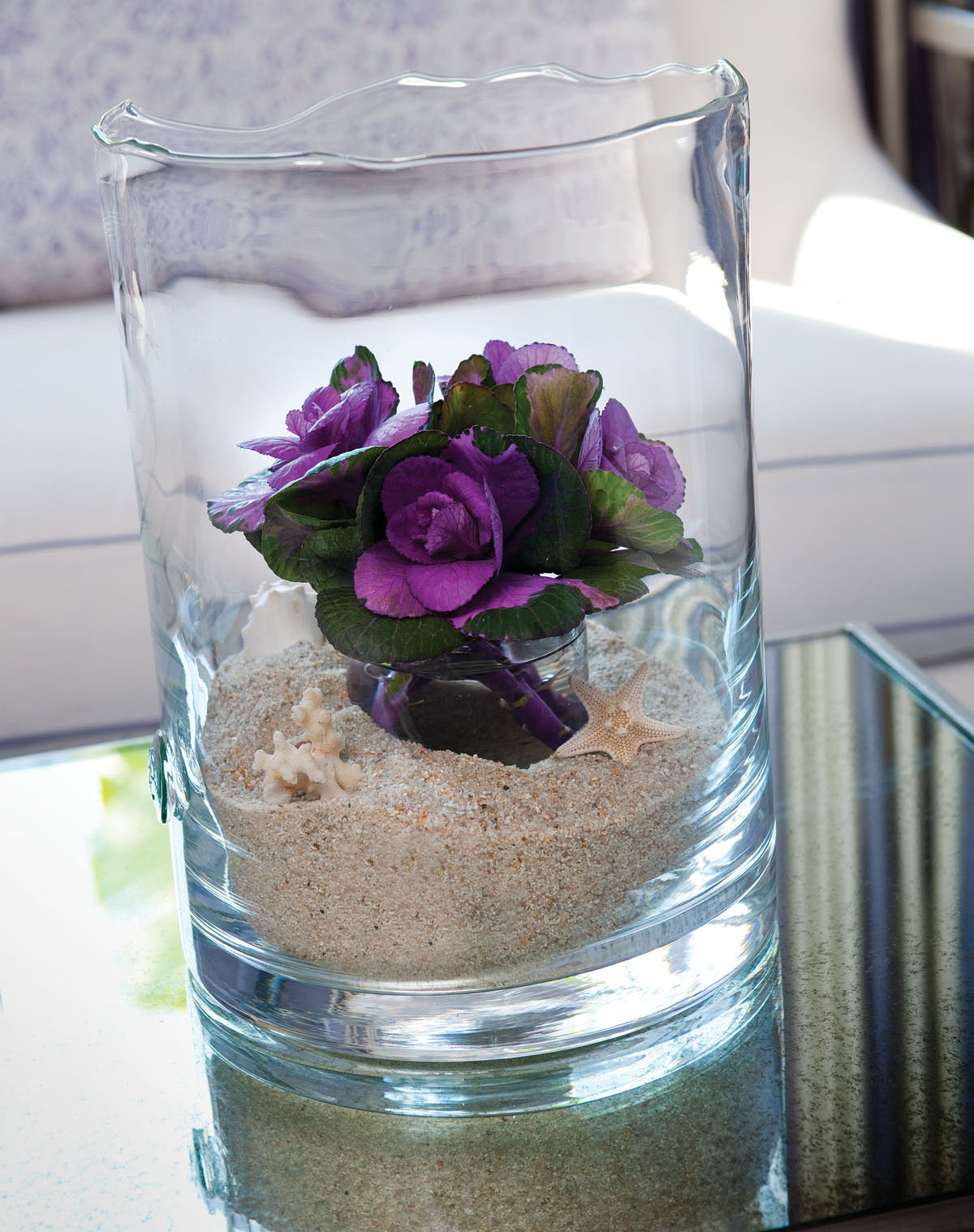
With its health benefits and fuchsia undertones fading to lilac, lavender and pink, au courant kale’s popularity rivals the fame of the 2014 Pantone Color of the Year: radiant orchid, a pale lilac with a strong pink base. Ruffled-edge “Cleybergh” vessel is by Sempre, headquartered in Belgium.
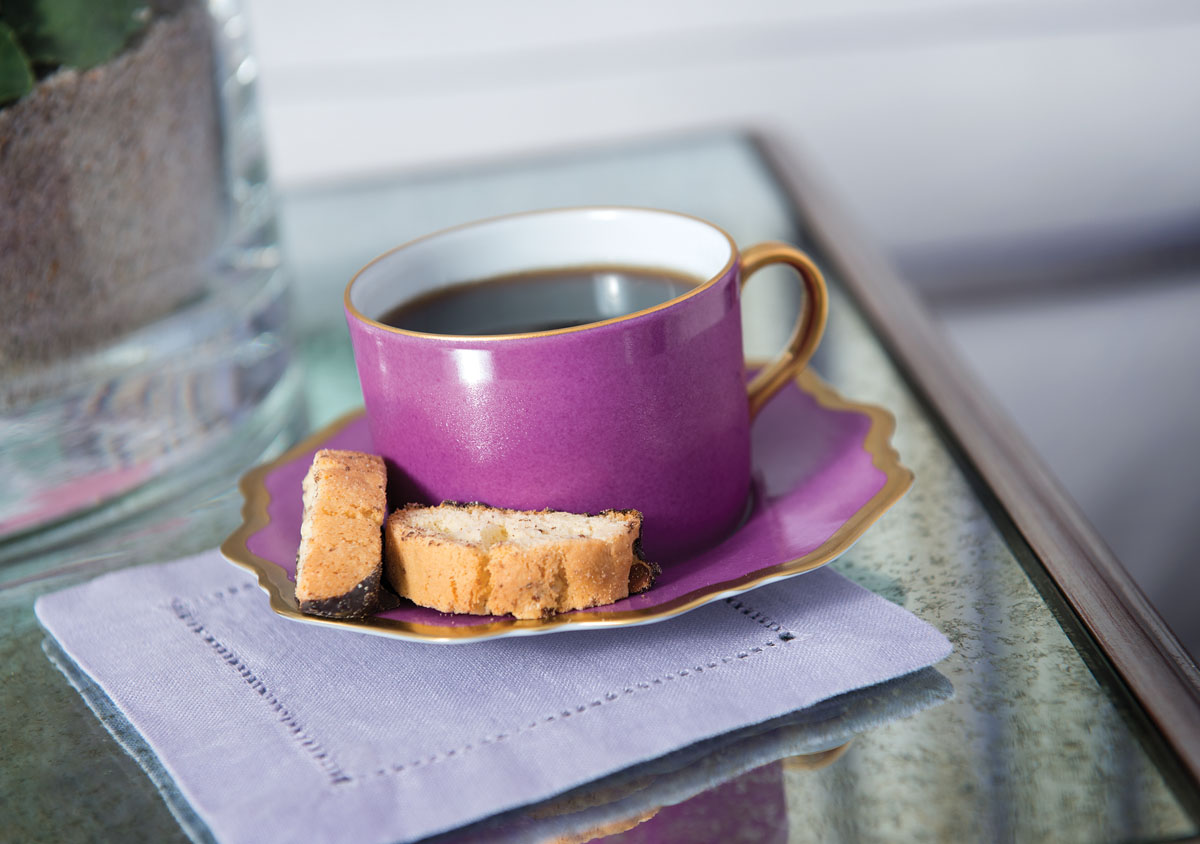
Vivid jewel-tone cup and saucer with scalloped trim is from Anna Weatherley and available in multiple colors.
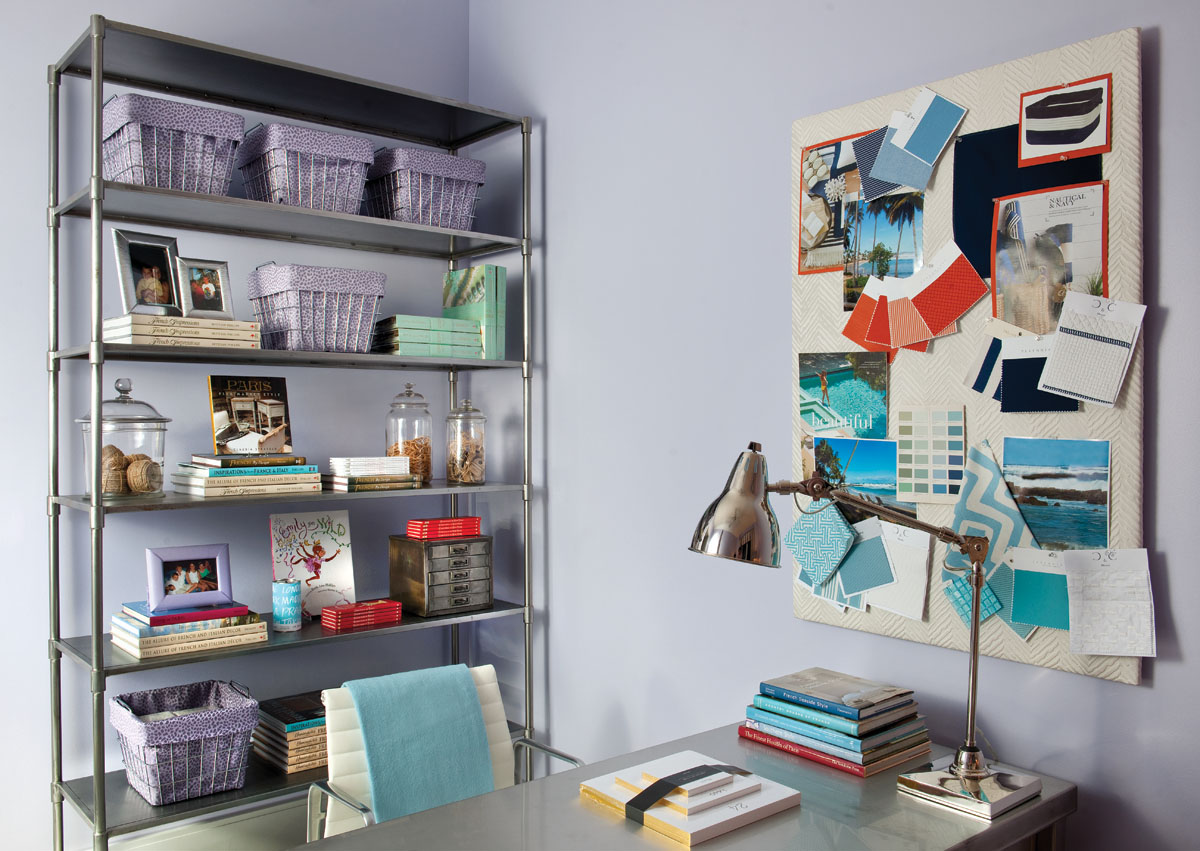
There’s a place for everything—books, paint and fabric samples, myriad chargers—and all are readily accessible thanks to the steel étagère by Brian Martin Metals, San Francisco, which also adds height. The fabric-covered inspiration board spurs creativity when looking out the window fails. A lavender somewhat lighter than spring crocuses paints the walls.
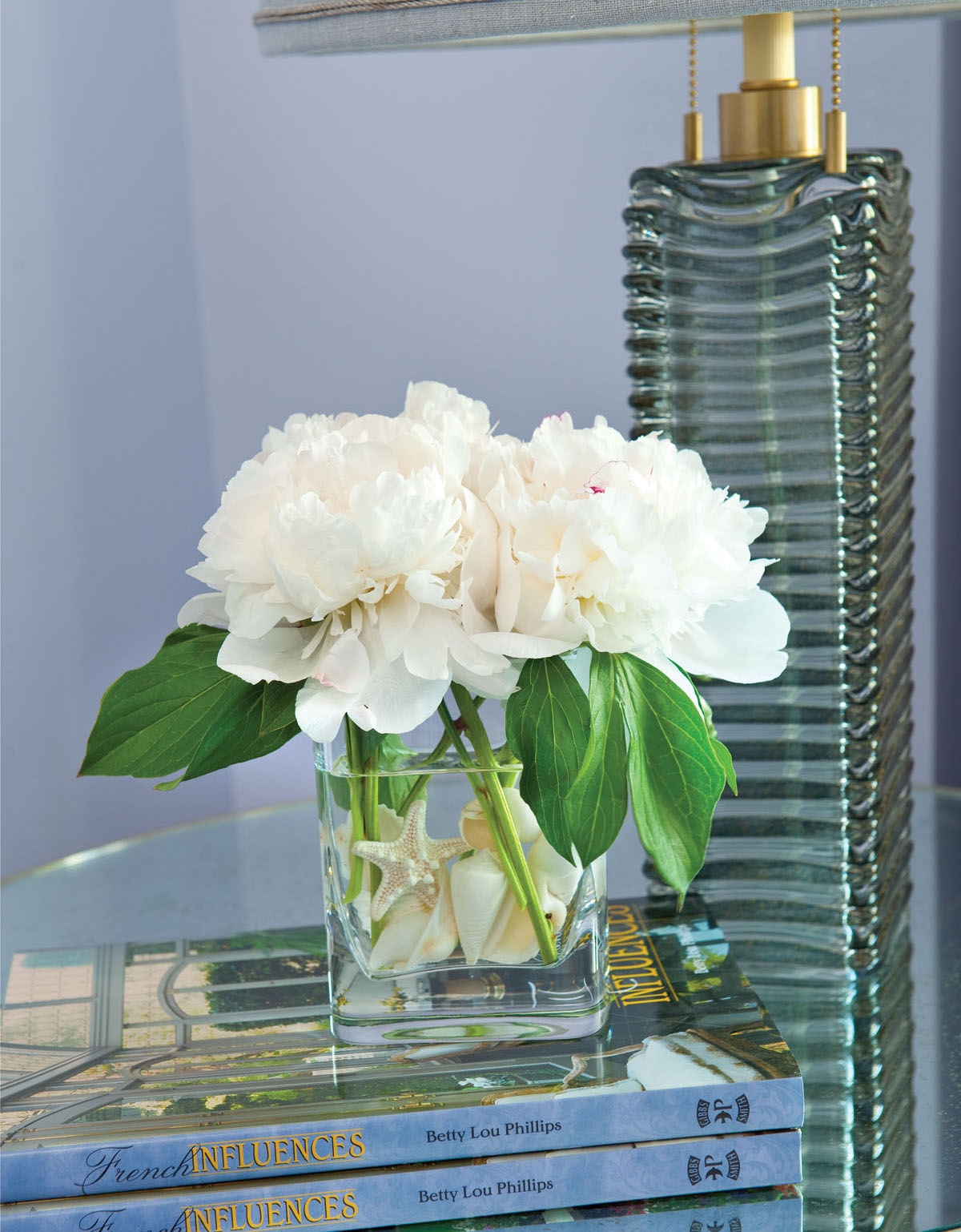
Enamored with peonies, French artist Édouard Manet (1832–83) planted them in his Gennevilliers garden, and then in 1864–65 painted a series of canvases focusing on the blooms.
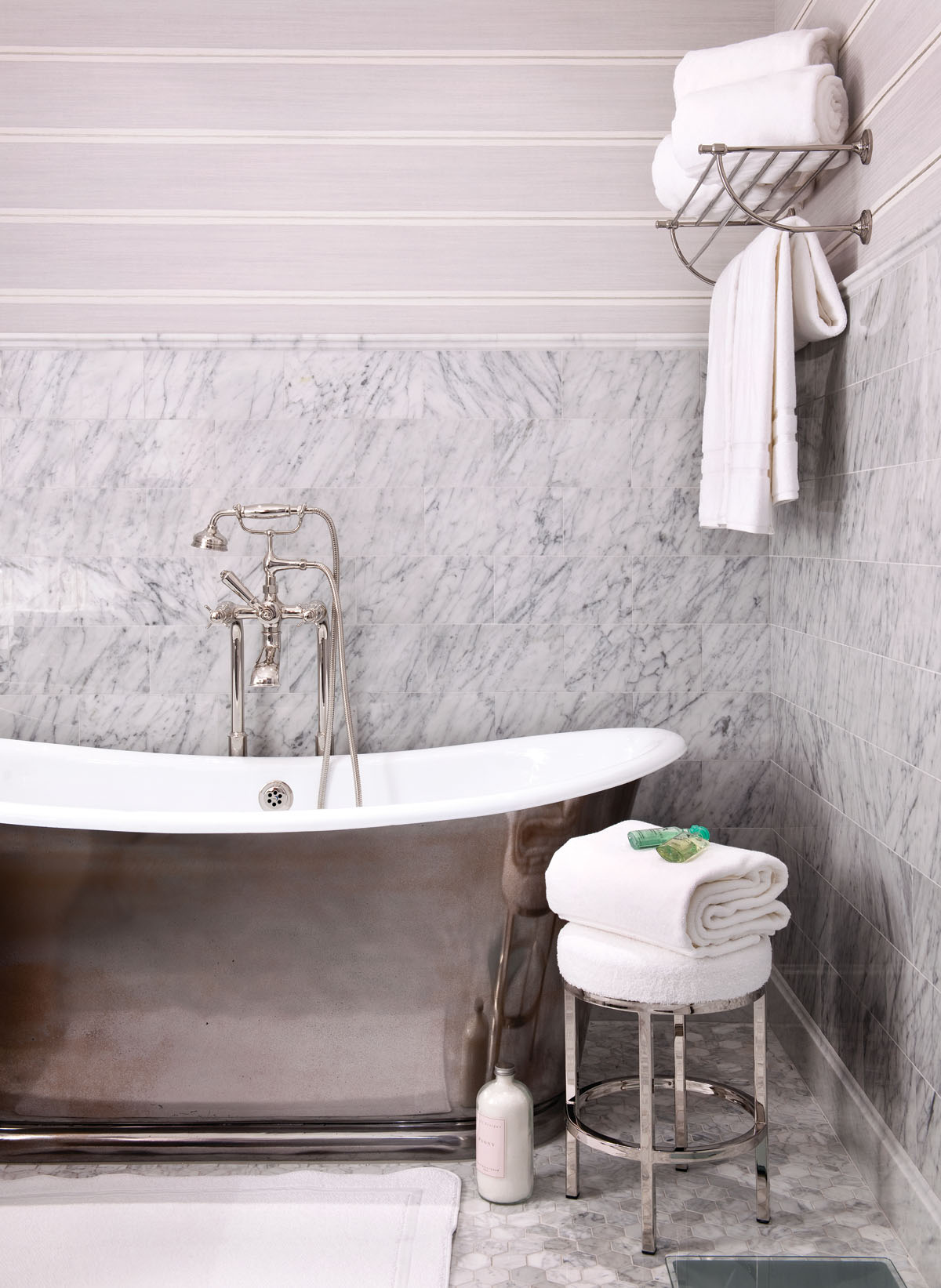
Communicating luxury and making bathing blissful: Waterworks’ polished nickel floor-mounted tub filler, freestanding Candide soaking tub, hotel rack and bath stool. Osborne & Little’s lavender horizontal stripe wallpaper floats above the Carrara marble—named for the Italian mountain from which it is extracted.
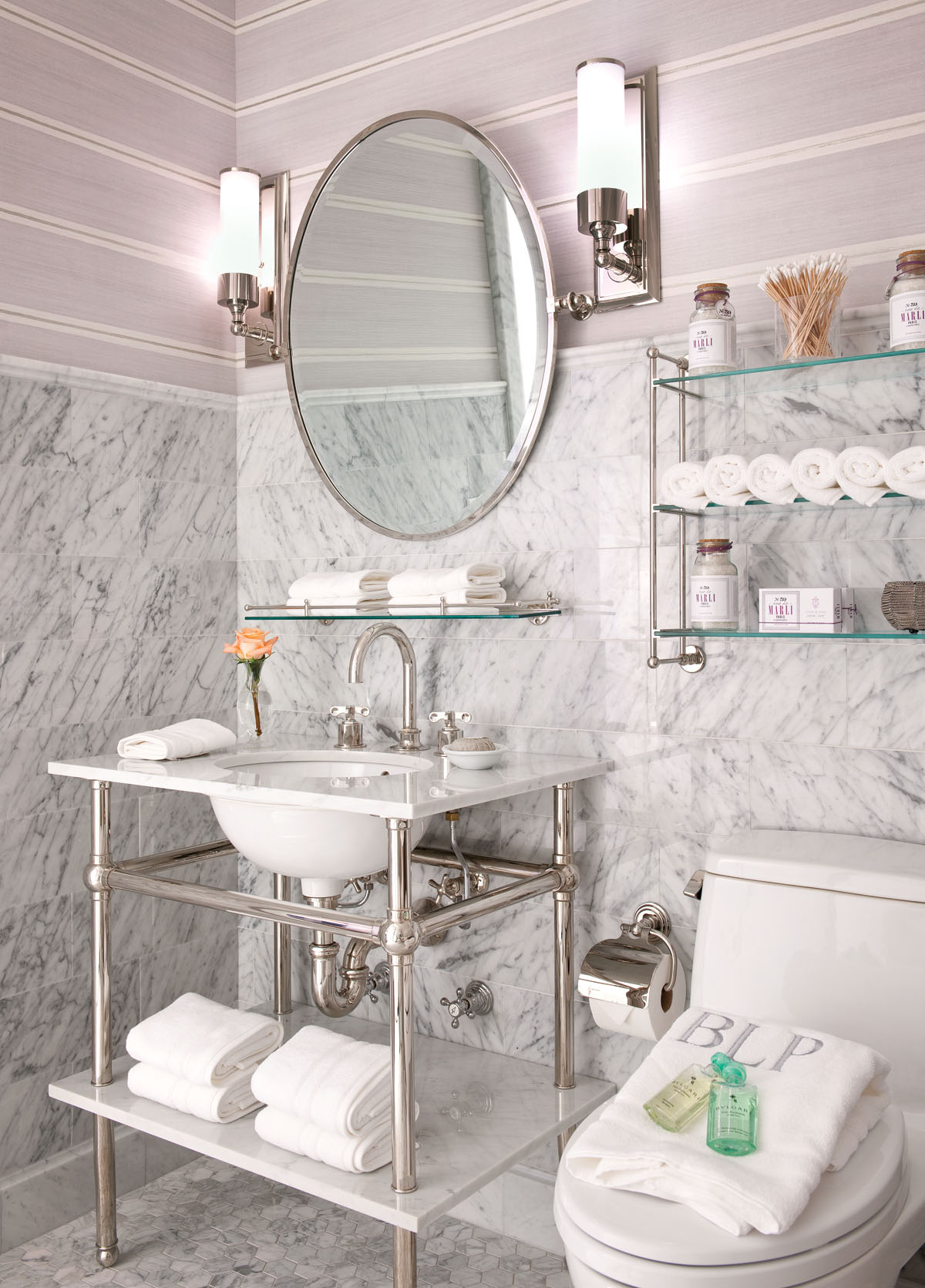
The BLP Waterworks four-legged Carrara marble-topped washstand—a space saver inspired by the author—is an alternative to a pedestal sink, which offers little counter space and no storage. Sconces from Urban Archeology, NYC, flanking the mirror, emit flattering light. (In contrast, a sconce mounted overhead casts unforgiving shadows on the face.) Bulgari travel-sized bath products welcome guests.